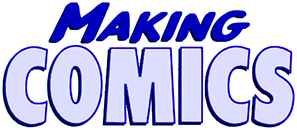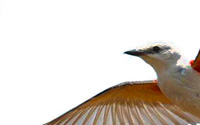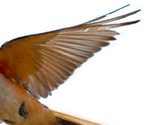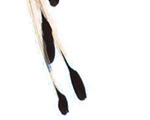Hey hey! 2022 is around the corner, so I thought that as my last article of 2021 (other than a brief minutiae post) I’d do a quick roundup of some odds and ends.

Elizabeth Hargrave, 2019
Over the past while Ellie has amassed a small collection of board games for us to play when I visit, so when I randomly happened across this one, I decided to buy it for her. I knew nothing about it, but it looked lovely, and who doesn’t like birds? Initially this looked like it may have been an expensive mistake, as the game is very complicated—for instance, each bird is distinguished by its habitat, food preference, point value, nest type, egg capacity, special powers, and (as the title of the game suggests) wingspan—and that’s not even getting into the way that bonus cards might give you points depending on whether the bird’s name includes a color, or a person’s name, or a geographical reference, or etc. or etc. We were pretty daunted by the learning curve, and the videos we found online weren’t as helpful as they could have been. But ultimately, gameplay is actually quite simple. Each turn, you select one of four actions: put a bird on your board, select food from the bird feeder, lay eggs, or draw new bird cards. That’s it. Four choices. But this extreme simplicity and extreme complexity work together to make for tremendous replayability: we’ve now played dozens of times, but all the possible combinations of bonus cards, end-of-round goals, and drawn birds make each player’s strategy quite different from one game to the next. It’s really good design, which helps to explain why this game became such a smash hit that instead of finding it at a boutique board game shop I wound up seeing it at a Target.
But there’s more to it than just the design. Ellie had another game that wasn’t entirely dissimilar to this, something about collecting mythical monsters. I think we might have played it once or twice. About twenty years ago I wrote an article about how an outfit called Popcap had been doing well for itself by taking old game designs (move the pipes around, click the clusters of colored balls, etc.) and putting attractive front ends on them. And a lot of the appeal of Wingspan is just that birds are nice! The art (cards by Ana María Martínez Jaramillo and Natalia Rojas, paraphernalia by Beth Sobel) is gorgeous, and it is fun to learn about all the different species—I have come to be partial to the dark-eyed junco, myself. And yet, from what I have read, Elizabeth Hargrave had trouble finding a publisher due to the same issue Scott McCloud discusses in his book Reinventing Comics: if you sell A, B, and C, but A consistently moves more units than B and C, then it might seem like the more profitable move is to just sell A, A, and more A. The problem is that when Z comes along that would outsell them all, you might pass on it because you’re only interested in A. “Birds? Not what my customers are into. Whaddaya got in the way of medieval fortresses?”
Speaking of Scott McCloud…

Scott McCloud, 2006
After reading Scott McCloud’s giant graphic novel The Sculptor back in September, I thought I should finally get around to reading the third book in McCloud’s trilogy of books about the medium of comics. As I discussed in my Sculptor article, Understanding Comics changed my life, and when I became a high school teacher I taught it to my sophomores every year. But Reinventing Comics didn’t do much for me—as an examination of the state of the industry circa the late 1990s and a set of proposals about how comics might be able to move onto the ’90s-era Internet, it was instantly dated. So partly because of this, and partly because I have always been wary of anything that smacks of “How to Write Books Real Good”—I never took any creative writing classes back in the day, for fear that I could never be wholly “original” afterward—I wound up skipping Making Comics when it came out in 2006. What a mistake! This book is packed with analysis that expands on the brilliance of Understanding Comics, as it delves deeper into the decisions comics creators must make to tell a story: how to break that story down into discrete panels, how to select viewpoints for those panels (angle, distance) and arrange them on a page… how to design visually distinct characters with appropriate body language, and convey a nuanced set of dozens of facial expressions… different ways to pair pictures and words… even if you’re just reading comics and not making them yourself, it’s a big plus to be cognizant of the craft that went into the pages before you. This book will make for many days’ worth of additional lessons the next time I end up running my comics unit! (Though I will probably skip the bit about which table to buy.)

Dan Rosen and Stacy Title, 1995
This is a movie I saw back in grad school—I forget why I ended up showing it to Ellie. The main thing I remembered about it was that Shonen Knife’s cover of “Top of the World” plays over the closing credits—it might have come up just because of that. Anyway, here’s Karnak with a plot summary:

The Last Supper is about a quintet of liberal grad students at a university in Iowa. One of them is stranded in the rain with car trouble and is rescued by a guy in a pickup truck; as a thank you, they invite the guy to stay for dinner. He turns out to be a Nazi who raped and murdered a child, and is on the verge of killing one of the grad students when another member of the quintet kills him first. And… they get away with it. They bury him in the backyard and cover the spot with tomato plants. And they decide that, having made the world a better place, they will keep doing this. That is, they will invite objectionable people over for dinner and kill them (now with poisoned wine rather than a kitchen knife). As time goes on, the bar their guests need to clear to be deemed in need of killing gets lower and lower: not just Nazis and rapists, but homophobic priests, anti-abortion activists, advocates of censorship. Over the course of the movie’s running time, the two who initially seemed most cavalier about the plan come to be eaten alive by guilt; on the flip side, the two who had the most reservations find that they’ve gotten over their qualms; then there’s the ringleader, who deteriorates into a full-fledged psychopath, enjoying all the murder for murder’s own sake. Eventually they find themselves face to face with the level boss of this dark game: a thinly veiled stand-in for Rush Limbaugh.
This movie was released in 1995, a year before the debut of Fox News and long before the full flowering of the fascist media complex that would transform American politics. All we had were the seedlings, Limbaugh and his copycats across the AM radio spectrum. And the filmmakers give the Limbaugh clone a speech that may have seemed plausible at the time but had Ellie flabbergasted at how wildly offbase it turned out to be. He explains that his extremism is, one, a ploy to boost his ratings and thereby solidify his position as a power player in the political arena, and two, an act designed to drive rational right-wingers away from the reactionary fringe and make sure they remain “anchored in the middle”, where they can work to implement the centrist agenda he actually wants. “The extremes of both parties grab all the headlines, but all the decisions are made by the moderates,” he tells the grad students. “I suggest that the more extreme those opposites get, the more moderate this society becomes.” A generation later, it is safe to say that, uh, that ain’t how it works.

David Stenn and David Kellogg, 1991
Ellie and I have watched quite a few Rifftrax versions of bad movies over the past while; I haven’t written them up partly because I figure I should at least watch the unadulterated versions if I’m going to do that, but mainly because when I’m in Portland I count myself as off the clock. However, I had to say a few words about this one. Cool as Ice is the Vanilla Ice movie. Unsurprisingly, it’s bad. But lots of movies are bad. We watched the Rifftrax of Crossroads, the Britney Spears movie, around the same time we watched the Rifftrax of this one, and Crossroads was bad, but it was blandly bad. Like, we actually finished it. Cool as Ice, though, was preposterously bad. Even with the jokes, I could barely take half an hour of it.
Here’s the thing about this movie. So Vanilla Ice and his posse are riding neon-colored motorbikes down a rural road. Vanilla Ice sees a high school girl riding a horse in her yard on the other side of a fence running alongside that road. He gives her the eye and decides that he likes what he sees. So he jumps his motorbike over the fence, landing directly in front of the horse, which rears up and throws the schoolgirl roughly to the ground, where she lands with what sounds like a bone-breaking impact. The “meet cute” accomplished, Vanilla Ice continues into town, ending up at a motorbike repair shop that resembles Pee-Wee’s Playhouse; he stands in front of it wearing a fluorescent jacket and day-glo pants but no shirt doing dance moves to no music, when he happens to spot the schoolgirl going by in a car driven by her preppy boyfriend. The two of them are having a conversation in front of the girl’s house when Vanilla Ice, backwards hat partially covering hair that has been shaved into brickwork, saunters up to them and tells the girl that she should “drop that zero and get with the hero”, i.e., Vanilla Ice. He proceeds to steal her day planner. The next morning, she wakes up to find Vanilla Ice lying in bed next to her, shoving ice chips into her mouth. At no point does the film evince any awareness that Vanilla Ice is not incredibly cool for doing all this. He is acting like the over-the-top sneering villain from whom the girl would eventually be rescued by the actual hero (perhaps one of the New Kids on the Block). But the movie has no idea. It thinks his behavior is awesome. Therefore I think that, at least for the time being, I will pencil in Cool as Ice as the single worst movie I have ever seen any part of.
 |
 |
|
||||||||
 |
 |
 |
||||||||
|
 |
|



